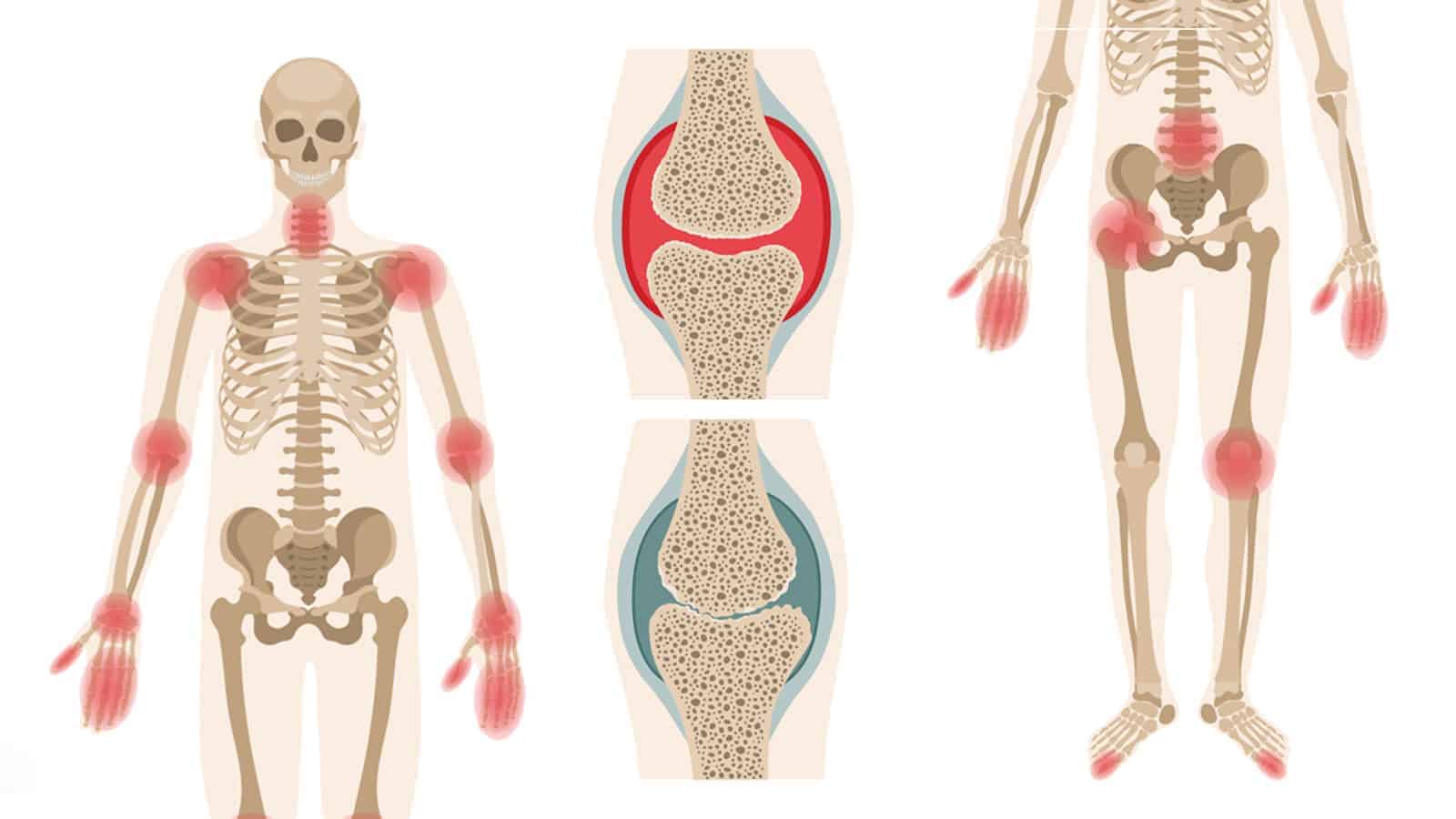Rheumatoid arthritis (RA) and osteoporosis are two of the most painful diseases that older adults often suffer from. While these conditions are quite different, they can sometimes get lumped into the same category. This is especially true for people who suffer from them; to these people, their joints ache, and that’s all that matters.
While it’s true, they are different diseases. Researchers recently found evidence that shows the correlations between these two diseases. This research is in the early stages, and nothing definitive has been set in stone. However, the study is promising and worth the medical community’s consideration. Keep reading to find out more about the details of this research and need-to-know information about both diseases.
The Details of the Research
Researchers from the Department of Hematology at The Third Affiliated Hospital of Wenzhou Medical University conducted a meta-analysis of 13 studies concerning rheumatoid arthritis and osteoporosis. These preexisting studies were pulled from several databases, including PubMed, EMBASE, and OVID, and the meta-analysis was conducted using PRISMA standards. The results of this meta-analysis were published in the August 2017 issue of the journal Medicine.
 Participants that were included in the study were selected based on a diagnosis of RA. People of all races, genders, and ages were included, and there was a control group of people without a diagnosis of RA or any other bone disease.
Participants that were included in the study were selected based on a diagnosis of RA. People of all races, genders, and ages were included, and there was a control group of people without a diagnosis of RA or any other bone disease.
The primary focus of the study was to identify the correlation between rheumatoid arthritis and bone fractures. They categorized these in three intervals: risk ratio (RR), odds ratio (OR), and hazard ratio (HR).
Researchers accounted for factors such as vitamin deficiencies, BMI, smoking habits, previous fractures, and more. In the end, the results of the survey showed that the risk ratio of people with RA versus those without was 2.25:1. That means that people with RA are more than twice as likely to develop osteoporosis.
The study outcomes
Even more surprising was the fact that the study showed that people who suffer from RA and then develop osteoporosis had a higher risk of developing hip and vertebral fractures than those who don’t have RA. Another statistic from the study was that women who had RA were more likely to develop osteoporosis than men, but the risk for both groups was around the same percentage. This led researchers to believe that osteoporosis’s increased risk due to RA is an independent risk factor.
This study’s results shine a light on a connection that doesn’t get nearly enough attention in the medical world. While there is no known way to prevent RA, you can take steps to decrease your risk of developing the disease. The study indicates that an increased effort in RA prevention may increase the prevention of osteoporosis.
What is the Difference Between Rheumatoid Arthritis and Osteoporosis?
Both diseases tend to develop in people as they get older. They both are characterized by pain, deformities, and they are both incurable chronic diseases. With so many similarities, it can be easy to confuse the two, mainly because they both generally cause about the same level of decline in the patient’s quality of life.
Despite having similar effects on a person, these two diseases are entirely different at the core. They are caused by various issues in the body and start in completely different ways. Although they both end in pain for the afflicted person, they cause pain in other ways also.
Rheumatoid Arthritis
RA is a disease that develops over time. It starts by affecting smaller joints first, such as fingers and toes. Eventually, it spreads to larger areas of the body. It can cause different symptoms in different people, and the symptoms may come and go.
RA is an autoimmune disorder. This means that a person’s immune system attacks itself. In this case, the immune system attacks the synovium, which is the lining that surrounds your joints.
The disease eventually wears the synovium down, causing the ligaments that hold your joints to get weak. This can lead to your bones scraping against each other and inflammation of the ligaments. The ligaments will eventually lose their shape, which is what causes disfigurement.
RA is often found in the joints, but it’s not out of the ordinary to affect other parts of the body. Some common areas include the skin, eyes, and lungs.
Osteoporosis
Osteoporosis is a disease of the bones. It happens when a person loses too much bone mass, and the body can’t make enough new bone mass to replace it. As a result, the bones become weak and brittle, leading to an increased risk of fractures.
The bones eventually become so weak that actions that cause even minor stress can fracture a bone. A sneeze, a light bump against a wall, or lifting something the wrong way can all become too hazardous for someone with osteoporosis. The disease also makes it difficult for your bones to heal after a fracture.
As horrific as these fractured bones sound, this isn’t the worst of the disease. Older people who suffer from these fractured bones often lose some or all their mobility. Complications from fractures can make matters worse, even to the extent that they die soon after.
 Statistics on Both Diseases
Statistics on Both Diseases
*These statistics were provided by the Centers for Disease Control (CDC) and the International Osteoporosis Foundation (IOF).
- By 2040, the CDC estimates that around 78 million adults in the U.S. suffer from some type of arthritis.
- Out of the total population diagnosed with arthritis in 2015, over 40 percent of them were Caucasian. The second-largest afflicted race is African-Americans – about 6.1 million.
- On average, a little more than one out of every four women reported having arthritis.
- In 2010, it was reported that around 10.2 million adults ages 50 and older had osteoporosis.
- Out of the 10.2 million people, 80 percent of them were women.
Risk Factors, Signs, and Symptoms of Both Diseases
Both diseases can affect anyone regardless of their race, gender, or socioeconomic status. However, there are risk factors that can make it much more likely for a person to develop one or both diseases. It’s not surprising that some of these risk factors are shared by both disorders.
Risk Factors
Some of the shared risk factors of both diseases include age, family history of the disorders, smoking, and poor nutrition (with RA, it’s obesity more than merely poor nutrition). However, one of the most significant shared risk factors is being a female. While both diseases affect a considerable number of men each year, they affect women more than men.
In the case of osteoporosis, being a female can cause several conditions that lead to osteoporosis. For example, low estrogen is one of these conditions. This can occur with menopause, surgery, or chemotherapy. Amenorrhea, which is the loss of the menstrual period in a woman’s younger years, can also lead to osteoporosis.
There aren’t many other risk factors for rheumatoid arthritis except environmental factors. Other risk factors for osteoporosis are chronic diseases such as arthritis (which is the main point of this article), hyperthyroidism, hyperparathyroidism, or hepatitis C.
Prevention of Both Diseases
Science and medicine are a long way away from figuring out how to prevent these diseases altogether. However, certain lifestyle factors can help reduce your risk of developing them. As the study from the Third Affiliated Hospital of Wenzhou Medical University researchers suggests, you could focus on preventing rheumatoid arthritis. At the same time, you’re young, essentially handling two birds with one stone, as the saying goes.
Some of the most important steps you can take to reduce your risk of rheumatoid arthritis include the following:
- Not smoking or stop smoking as soon as possible.
- Exercise more and lose weight.
- Take steps to reduce or eliminate your exposure to environmental contaminants such as asbestos, silica, and other hazardous chemicals.
- Get treatment as soon as possible if you begin experiencing RA symptoms. This can prevent or slow the condition down from getting worse.
In addition to this, taking steps to maintain excellent bone health throughout your life can fight against osteoporosis. Intaking enough calcium is one area that many people fall short in. You can also do what you can to maintain healthy hormone levels, exercise more, and become too thin.
 Final Thoughts on the Connection Between Rheumatoid Arthritis and Osteoporosis
Final Thoughts on the Connection Between Rheumatoid Arthritis and Osteoporosis
The study from the Third Affiliated Hospital of Wenzhou Medical University researchers leads to a promising lead on getting a handle on osteoporosis. Doctors have suspected a link between RA and osteoporosis for a long time. But this study finally provides tangible evidence of this. The hope is that this study is enough to launch a more in-depth assessment of the correlation between these two diseases.
It may take quite a while, but if researchers continue to make discoveries like this one, answers to these diseases’ solutions may finally reveal themselves. In the meantime, you need to take care of yourself as much as possible so you don’t become one of the RA or osteoporosis statistics.

















